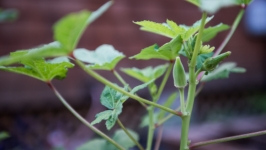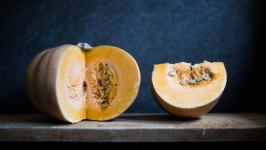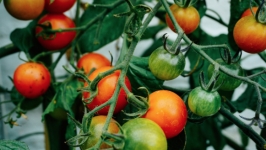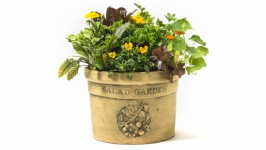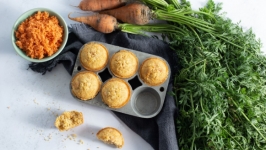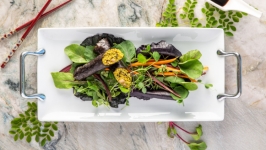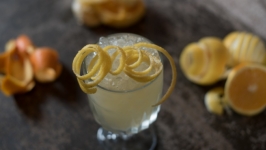A Guide to Southern Peas
A staple of traditional soul food, the Southern Pea is a term for a broad range of field pea varieties. Also called cowpeas, these legumes are believed to have originated in the Niger River Basin of West Africa, spreading by trade and migration through Africa, India and ancient Greece and Rome. While they weren’t brought to the U.S. until thousands of years later, southern peas are as easy to grow here as in their ancestral home.
The name cowpea originated due to their use as a feed crop for cows. Names of these legumes are almost as rich and diverse as the robust dishes they become: Running Conch, Hog Brain, Laundry Day, Big Red Ripper, Blue Goose, Hercules and more. Some, like Whippoorwill, have been in this country so long they were grown by Thomas Jefferson in his gardens at Monticello. Others, like the Northeast Florida favorite White Acre pea, have been around just a few decades. No matter the variety, easy-to-grow cowpeas have a deep-rooted (pun intended!) place in Southern cuisine dishes like Hoppin’ John (black-eyed peas served as a New Year’s tradition) and fresh-cooked field peas with ham and okra.
Interested in adding cowpeas to your garden? All are easy to grow and each variety is grouped loosely into one of three categories: small “lady” peas, firmer-textured black-eyed peas and meaty crowder peas (so-called because of the way the peas jostle each other in the pod). All three types are perfect for our climate. One more reason to grow cowpeas: Their flowers are beautiful and edible, even after the plant sheds them! They taste like – what else? – fresh peas.
To get you started, look for these seeds, five varieties that do well in Northeast Florida gardens.
WHIPPOORWILL
This crowder cowpea is a light creamy brown with darker brown speckles and draws its name due to its likeness to Whippoorwill plumage. A smaller variety that became popular in the 19th century because of its creamy texture and flavor, the vines grow to 5 feet or more. The Whippoorwill is very drought tolerant, even for cowpeas, and useful in crop rotation for depleted soils.
COLOSSUS
Named for the robust pods that outsize its neighbors, this crowder is a bushy, fast-producing plant. The Colossus has pale purple flowers in the morning that close like butterfly wings in the afternoon, revealing buttery yellow undersides. Colossus pods, about 7 to 9 inches long, are purple-tinted with tan peas.
ZIPPER CREAM
Many Florida gardeners favor this variety because the plants are so productive and the seeds are easy to coax from the shell due to the seam down the middle. Plants are 2 to 3 feet high and produce 6 to 9-inch pods with large, creamy-white peas.
WHITE ACRE
These lady peas are the ones people come searching for by name at farmers’ markets (and the ones people pout about when sold out). Although tougher to shell than zippers, this variety was bred to withstand many pests that can kill other heirloom peas. Pods are 7 to 8 inches long and produce small white peas.
PINKEYE PURPLE HULL
Similar to black-eyed peas, this variety has pink eyes when fresh that dry to a dark maroon or purple rather than black. The fresh peas are creamy whitish green encased in easy-to-open purple pods.
GROWING TIPS
• Plant seeds April through August.
• Grow in full sun in well-drained soil.
• Don’t add fertilizers with too much nitrogen as cowpeas create their own. Too much nitrogen leads to lots of foliage but fewer pods.
• At the end of the growing cycle, till the stems, leaves and leftover pods under to improve the soil. Pull any diseased plants first.
• Choose the best plants and let a handful of pods dry until the peas inside rattle when shaken. Store pods in a cool, dry place. The dried peas become seeds to plant for your next gardening season!
SERVING TIPS
• Southern peas can be eaten as “snaps,” young green pods, prepared like green beans. They can also be eaten raw.
• Slow cook peas by putting shelled peas in a crockpot, cover with water or stock, add some salt and pepper, smoked ham or turkey and let them cook until tender, about 30 minutes. Serve with rice and cornbread for an easy dinner.



